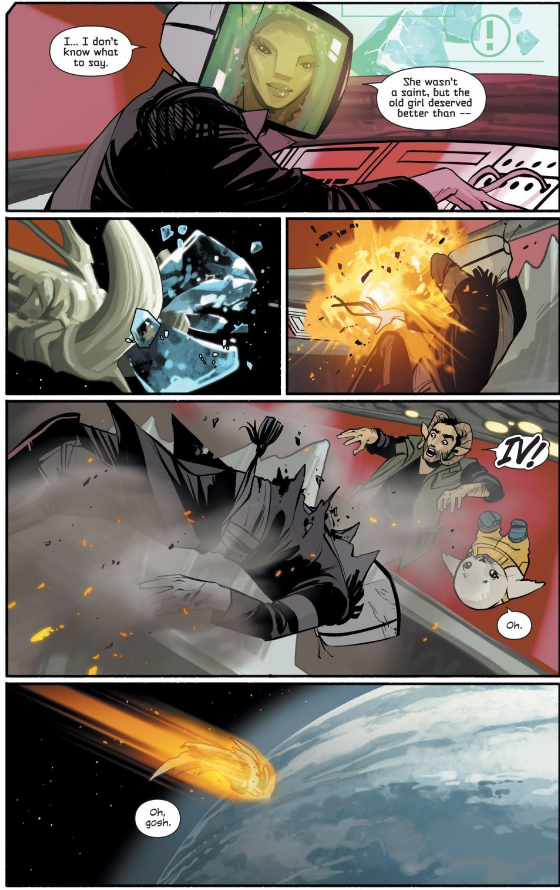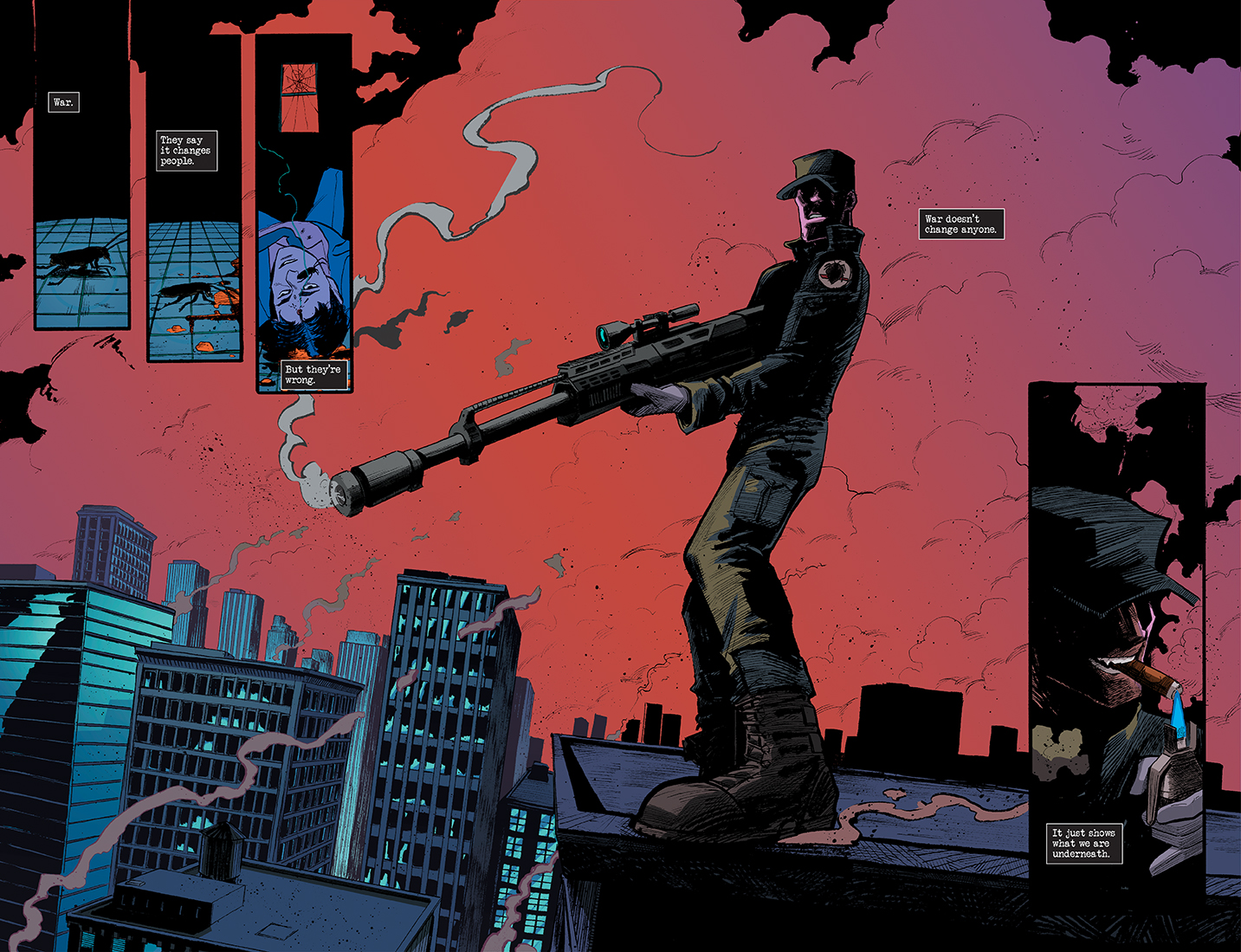REVIEW: Punks Not Dead: London Calling #1 adds mystery to an already great concept
Punks Not Dead: London Calling #1 is out 2/27/2019.
By Zack Quaintance — The IDW - Black Crown title Punks Not Dead launched early last year from writer David Barnett and artist Martin Simmonds (with flatting by Dee Cunniffee). It was on the tail end of the first wave from the imprint, trailing behind Kid Lobotomy and Assassinistas, which both came with more experienced creators attached, specifically writer Peter Milligan for the former and artist Gilbert Hernandez for the latter. Punks Not Dead, however, emerged as arguably the most audacious and idiosyncratic of the bunch, which as Black Crown readers well know, is really saying something.
See, Punks Not Deads’ first arc (which ran for five issues) told the story of an angsty teen in England who via some supernatural imbroglio got attached to the ghost of Sid Vicious, bassist/vocalist for the seminal punk band, the Sex Pistols. Punks Not Dead—simply put—was a $@&ing blast. I especially enjoyed it, because growing up in the late ‘90s, I used comics and punk for my own escapism (think Marvel Knights, Vertigo, Geoff Johns and Greg Rucka runs at DC...while listening to bands like Pennywise and Bad Religion). As such, a comic about a teenager whose life is charged by the ghost of a punk rocker felt like it was made for me. I loved the characters, the tone, the voice, the concept, all of it.
This is all a long-winded way of saying I’m happy the book is back, and not only is it back but (cliche alert!), it’s back and better than ever. During the comic’s first arc, the creators spent much time establishing the book’s premise, working hard on the pages to introduce us to our protagonist, show us the home life he’s stuck with, and, perhaps most importantly, make it seem if not entirely believable, at least feasible that he’d become entangled with the ghost of Sid Vicious, and they pulled it all off wonderfully. Now, they’re back in the second arc with a solid foundation already built. Barnett and Simmonds use that foundation to launch readers into a suspenseful plot with the first issue of this new series.
Basically, the first arc setup the concept—balancing perfectly between punk and paranormal—and now the second arc is here with a firm call to action. In Punks Not Dead: London Calling #1, we get the same great concept from the earlier issues, just now with a new quest to give our action shape. Writer Barnett’s scripting also feels more confident, a bit more tongue-and-cheek, and Simmonds artwork is, as always, absolutely fantastic sequential storytelling. Add in a tinge of mystery (that I won’t spoil here), and what you get is a truly promising start to the second arc of a great comic.
Overall: Punks Not Dead: London Calling #1 is this book’s best issue to date, taking the fantastic punk-paranormal premise and building a new suspenseful mystery on top of it. Few books on the market today are as confident and clever as this one, and we should all be excited for its return. Highly recommended. 9.3/10
Punks Not Dead: London Calling #1
Writer: David Barnett
Artist: Martin Simmonds w/flatting be Dee Cunniffe
Publisher: IDW - Black Crown
Price: $3.99
For more comic book reviews, check out our review archives.
Zack Quaintance is a tech reporter by day and freelance writer by night/weekend. He Tweets compulsively about storytelling and comics as BatmansBookcase.















